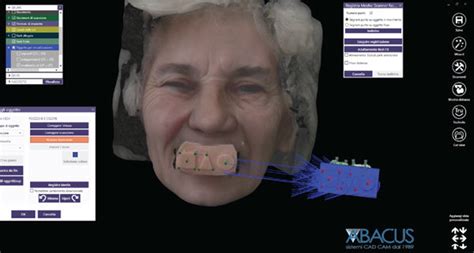Effortlessly Import ICAM Files into exocad Software: A Comprehensive Guide
Importing intraoral scanner (IOS) files into exocad software is a crucial step in the digital dentistry workflow. This guide will walk you through the process of seamlessly importing ICAM files – a common file format used by many IOS systems – into exocad, ensuring a smooth and efficient transition from scan to design. We'll cover various methods, troubleshooting common issues, and best practices to optimize your workflow.
Understanding ICAM Files and exocad Compatibility
ICAM (Intraoral Camera Acquisition Model) files are a standardized format for storing intraoral scan data. They contain detailed 3D information about the patient's teeth and surrounding tissues. exocad, a leading CAD/CAM software in the dental industry, supports the import of ICAM files, allowing for a wide range of digital dentistry applications, including crowns, bridges, and dentures. However, the specific import process might vary slightly depending on your exocad software version and the IOS system used to create the ICAM file.
Step-by-Step Guide to Importing ICAM Files into exocad
The precise steps might differ slightly depending on your exocad version, but the general process remains consistent. Here's a general walkthrough:
-
Open exocad: Launch your exocad software and select the appropriate module for your intended restoration (e.g., exocad DentalCAD for crown and bridge design).
-
Navigate to Import: Look for the "Import" function, typically located in the file menu or toolbar. The exact icon or menu item may vary depending on your exocad version.
-
Select the ICAM File: Use the file browser to locate the ICAM file on your computer. Ensure you select the correct file, as importing an incorrect file will lead to errors.
-
Import Settings (if applicable): Some versions of exocad might offer import settings. These settings might allow you to adjust parameters such as scaling and rotation. Review these settings before proceeding. Generally, the default settings are sufficient.
-
Processing and Preview: exocad will process the imported ICAM data. This might take a few seconds or minutes depending on the file size and computer specifications. Once processed, you'll typically see a preview of the scanned model in the exocad workspace.
-
Model Manipulation (if needed): You can now manipulate the imported model within exocad. This includes model trimming, cleaning, and other necessary steps before proceeding to the design phase.
Troubleshooting Common ICAM Import Issues
While the import process is usually straightforward, some issues might arise.
H2: The ICAM file is not recognized by exocad.
This typically happens due to file corruption or incompatibility issues. Try these steps:
- Check file integrity: Ensure the downloaded ICAM file is not corrupted. Download it again from your scanner's software.
- Software updates: Ensure both your exocad software and your scanner's software are updated to their latest versions. Compatibility issues are often resolved through updates.
- Contact support: If the problem persists, contact exocad or your scanner manufacturer's technical support for assistance.
H2: The imported model appears distorted or incomplete.
This often indicates problems with the original scan.
- Re-scan the patient: The best solution is often to re-scan the patient using the intraoral scanner. Ensure proper scanning technique is used to prevent distortions or missing data.
- Examine scan quality: Review the original scan data on the scanner's software to identify any potential issues with the scan quality before importing.
H2: The import process takes excessively long or crashes.
This might be due to insufficient system resources.
- Check system resources: Ensure your computer has enough RAM and processing power to handle the import process. Closing unnecessary programs might help.
- Optimize computer performance: Defragmenting your hard drive, updating your drivers, and ensuring enough free disk space might improve performance.
Best Practices for Seamless ICAM Import
- Use a reliable intraoral scanner: Invest in a high-quality scanner to produce accurate and complete scans, minimizing the chances of import issues.
- Proper scanning technique: Follow the manufacturer's instructions for proper scanning techniques to avoid errors and ensure complete and accurate scan data.
- Regular software updates: Keep your exocad and scanner software updated to the latest versions to ensure optimal compatibility and access to the latest features and bug fixes.
- Data backup: Always back up your important scan data regularly to prevent data loss.
By following these guidelines, you can confidently and efficiently import ICAM files into exocad, unlocking the full potential of your digital dentistry workflow. Remember to always refer to the official exocad documentation and your scanner's user manual for specific instructions tailored to your setup.

